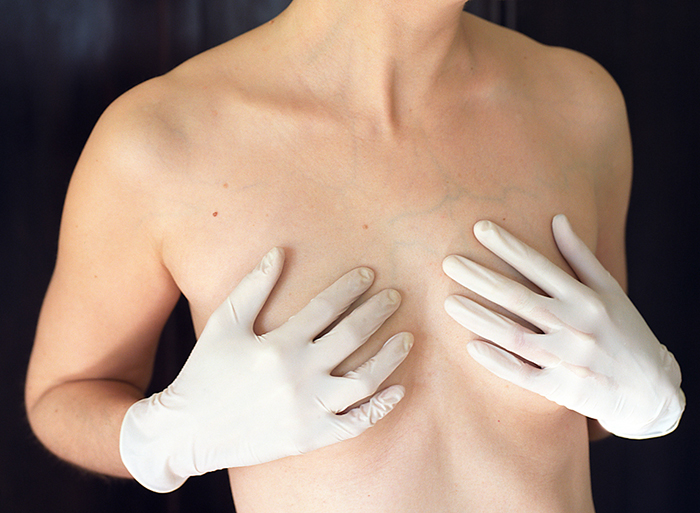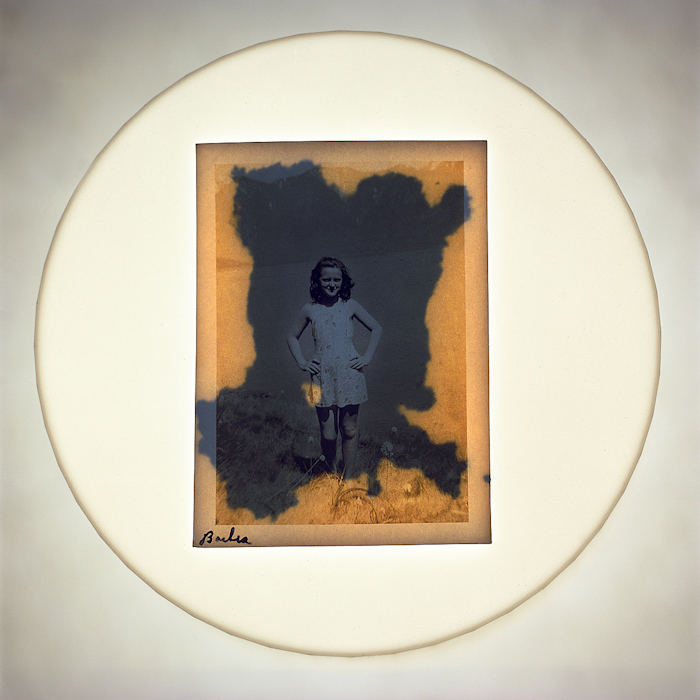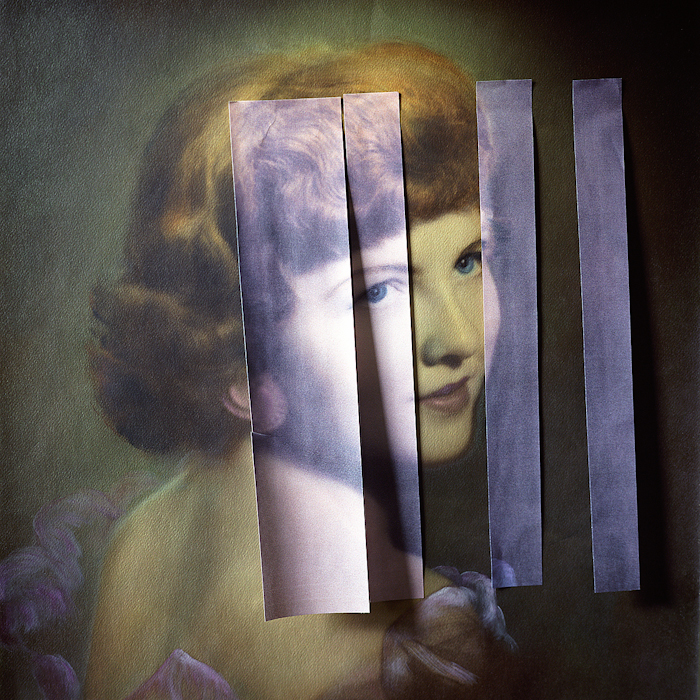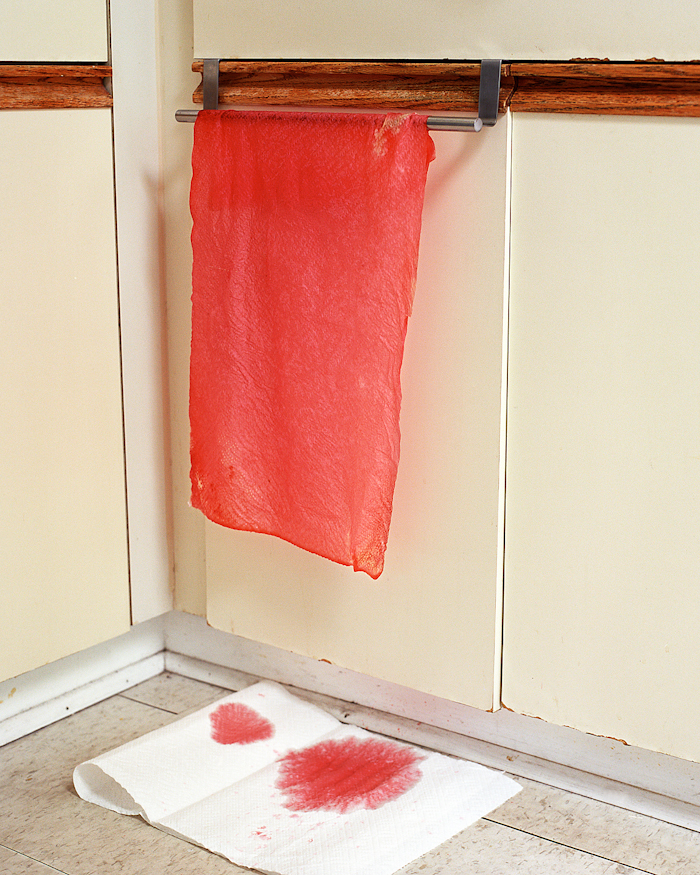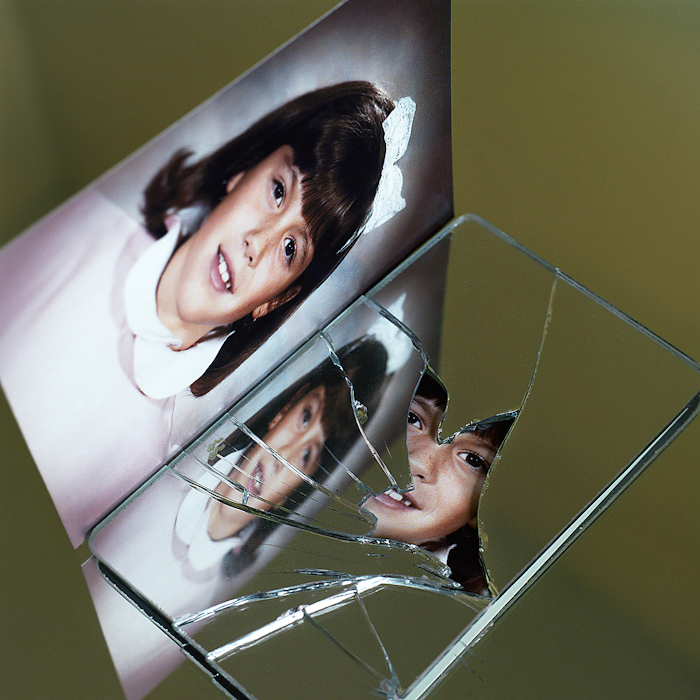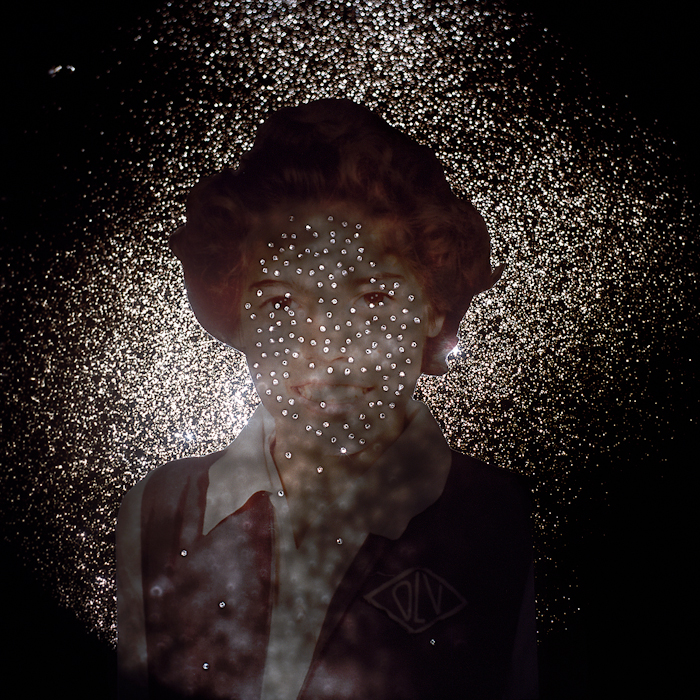Interview: Birthe Piontek

Birthe Piontek’s work first caught my eye when she was awarded the Critical Mass Book Award for her series The Idea of North in 2009. And while this project grabbed my attention, it is her recent series Lying Still and Mimesis that calls for a re-evaluation into the significance of the artist’s photographs. Utilising installation and sculpture, Piontek forces us to re-examine the boundaries of the contemporary portrait and to what degree identity can be visualised. Her work explores themes of the individual and self, and often comes from a place of deep personal discovery while also being universally accessible. I had the great joy to see the artist’s prints up-close when she came to Santa Fe last summer and am fortunate to be able to share a bit from our recent exchange with Paper Journal.
Your series Lying Still is visual diary, capturing your personal journey through sickness. The images weave interpretive self-portraits alongside still lifes in a poetic fashion. I’m curious to know the process of how you chose to shoot this series with this mixture of styles and what these photographs represent metaphorically?
Lying Still started out as a visual diary that accompanied me through my daily life, mostly to process and express the things that were going on for me during that time. Over time the project grew into an extensive investigation of the self through photography. Although I primarily focused on portrait photography, I see the still lifes and installations as ways to further experiment with the expressions of identity. The still lifes are, like in previous projects, an extension of the portraits. These images – that may at first appear as delicate disruptions of the everyday – address themes of intimacy and mortality evoking the desires, urges and fears that exist latently in our subconscious. They refer to our dreams, to something unknown, an inner landscape of our minds that is hard to point out and put the finger on.
After having worked on the portraits and still lifes for about four years, I also decided to include found black and white images to the project. These vintage images are mostly black and white press photos from the 50’s and 60’s, depicting women while they are performing, modelling or presenting something. Including these images was an important step to open up the project and make a broader statement about womanhood and female identity. All the images – the self portraits, the still lifes, and the found images are puzzle pieces that together create one large image which deals with the expression of the self and the representation of women and the female body.
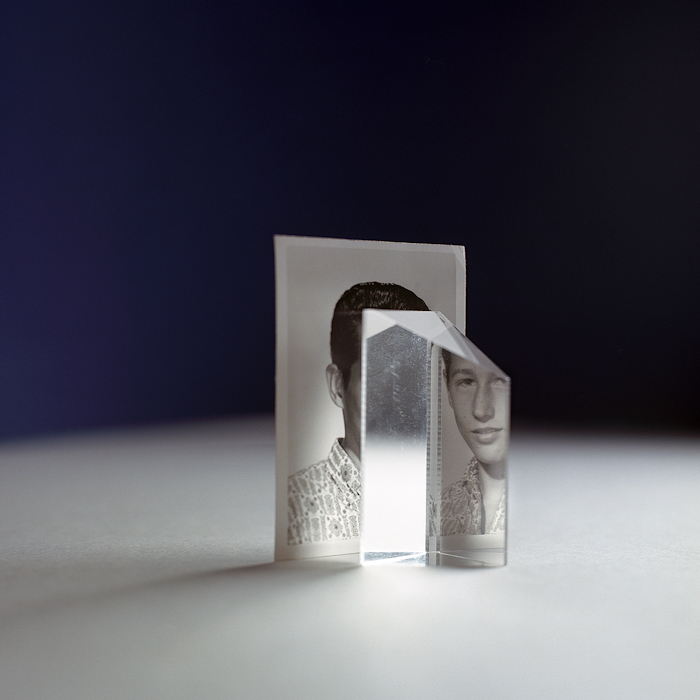
The self-portraits here seem to be a departure from your previous, more documentary portrait style. Previously you’d told me you were questioning the approach in regards to your own portrait making processes and maybe even contemporary portraiture as a whole. Do you feel you broke free from your past notions of what a portrait could be with this series and would you expand upon the evolution of this new style?
One quote that really speaks to me is this one from Diane Arbus: “The thing that’s important to know is that you never know. You’re always sort of feeling your way.”
This really says it all. This is how I feel about my work, about the different styles and the different projects. In each project I’m aiming for the best visual language, the most appropriate way to express whatever I want to say with that particular body of work. When working on The Idea of North, I became really aware of the limitations of what I am actually able to say with a portrait. I realised that all those people I took pictures of, were in a way ‘my cast’, who helped me tell a story that I had created in my mind. When taking a portrait, I am always projecting something onto the person I’m taking a picture of; there might be an overlap of what I see in the person and the ‘real’ identity of that person, but I will never really be able to access all those deeper layers of identity with my camera.
Also, there is always a certain distance, or a bit of a barrier, between the camera and the subject, especially if you don’t know the other person very well. When starting with Lying Still, I was interested in letting go of all barriers and really wanted to access and express what is there, deep down in those hidden layers of our subconscious that make up our identities. Being my own subject, helped me to minimise that distance, so I succeeded in that regard but only for this specific project. I am still very much interested in portraiture and am not planning on taking pictures of myself for the rest of my life, so the challenge will be to apply and use whatever I learned through Lying Still to the next project that involves portraits of other people.
It seems appropriate that your artistic path evolved alongside your own personal internal change. I think this happens with a lot of artists and I am interested to hear how your artist evolution informed your personal journey?
Yes, they definitely go hand in hand. Lying Still started out to be a personal project that reflected directly onto my internal landscape and my personal journey. It very much helped me process and articulate certain emotions and thoughts revolving around my own identity, my body and the things in our lives that are beyond our control.
The longer I worked on it I realised that, although a very personal incident sparked this project, it was such a universal thing I was talking about; the topic of change and all those fears and desires that come with it. And I realised I was also touching upon other issues like female identity and the role and representation of women in our society. Seeing the work evolve in this kind of way was a profound realisation and certainly had an impact on my personal journey as it helped me understand myself, what I think, feel and how I operate in the world.
I don’t know if this is true for every artist but art and working on projects definitely gives me access to the world and to myself; maybe one could call it therapeutic in that way, although that might sound a bit too esoteric and diminishes its power and purpose.
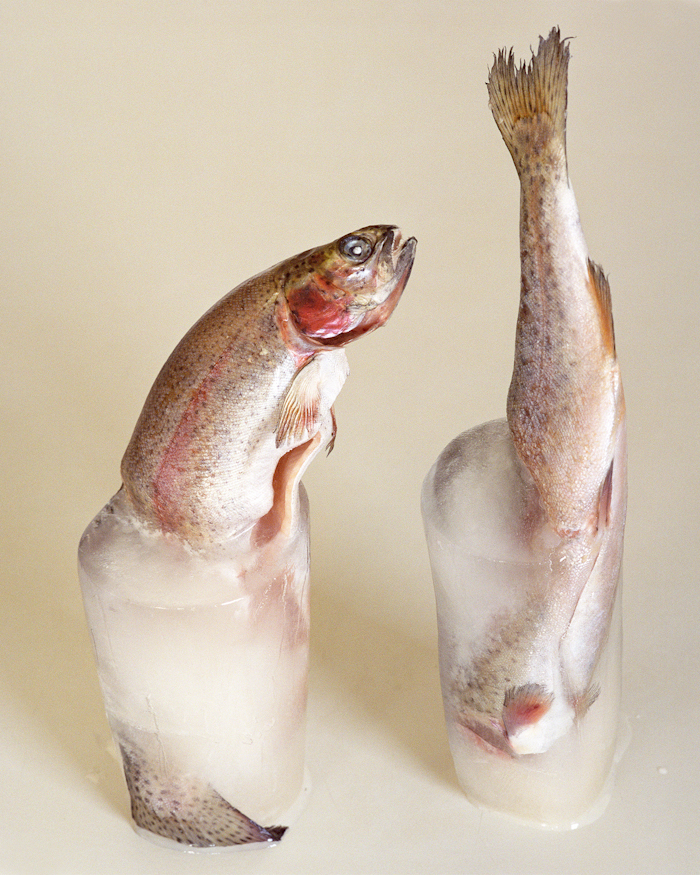
An image I keep referring back to is your photograph of two fish frozen in ice. It’s an incredible visual for me and I have been wondering how you came to make this image and what it represents for you when tied in to this project as a whole?
The images in Lying Still all are allegories on the human condition, poetic scenes that have their origin in the deep reservoir of the unconscious and refer to our dreams, desires, urges, memories and fears. I am using a lot of metaphors and symbols to express our states of the mind and our emotions. I think of ways to visualise certain words or expressions that we use when talking about our psychological states. Trouts, the image of the frozen fish, came to life in the very same way.
As these images refer to our subconscious mind, this is also where they have their origin. I sometimes can not really put my finger on how exactly an image evolved. I know what I want to express and I spend a lot of time experimenting with different ways to say it. The challenge is to be subtle and poetic and not too literal. I want to leave room for interpretation and projection. Trouts is a perfect example for that. People read it in different ways but it always evokes a certain feeling and triggers an emotional response that goes in line with the emotion I wanted to express.
A few years ago Photo Lucida published your book The Idea of North. You are now working on a book for Lying Still. What is it about the photobook that is important to the realisation of this project and what elements does the book format offer that elevates this work?
There are a few reasons to bring Lying Still into a book. First of all the original idea, when starting this project, was to treat the images as a diary. It was meant to be a journal that would capture my personal journey through that specific time in my life. While I let go of the idea of a diary as the project became less personal over time, it is where its roots are.
Second, the project brings together different styles and narratives; there are the self-portraits and the still lifes, some of which have their origin in my interest in installation and sculpture and tap into that kind of visual language, and then there are the vintage b&w images. Combining all these different aspects into a book was a challenge but seemed to really make sense as it is the perfect format to create a multi layered experience. It enabled me to weave a complex story by using and joining different threads and methods.
Sometimes the different narratives clash and raise questions, other times they complement each other, add meaning, and give clues. There are images that are meant to be seen as a pair, others are an extension of one another. So it’s important to bring them together and create a flow and a pace and by doing this, you give an option of how to read and interpret the work. It’s like offering a frame or a structure that holds the work together, with opportunities to pause, repeat, speed up and slow down.
Although visually different, I see your series Lying Still and Mimesis as being tied closely together. Would you elaborate on my assumption and tell us how Mimesis came about?
I had worked on Lying Still for about two years, when I came to a point where I felt something was missing but I didn’t quite know what it was. I decided to take a break from it and started focusing on Mimesis. I had always been fascinated with vernacular images as well as objects like mirrors, that revolve around the idea of looking at ourselves. After having looked at myself for two years by working on Lying Still, it made sense to think a bit more about our desire to look at ourselves and our attempts to capture our identities, either by an everyday ritual like the look in the mirror or by taking pictures of us. While I was working on Mimesis I realized that, although both projects have a very different visual language, they share the same ideas and my desire to somehow go deeper, to investigate the inner landscape of a human being, to visualize the complexity of human identity and the emotions we are made of.
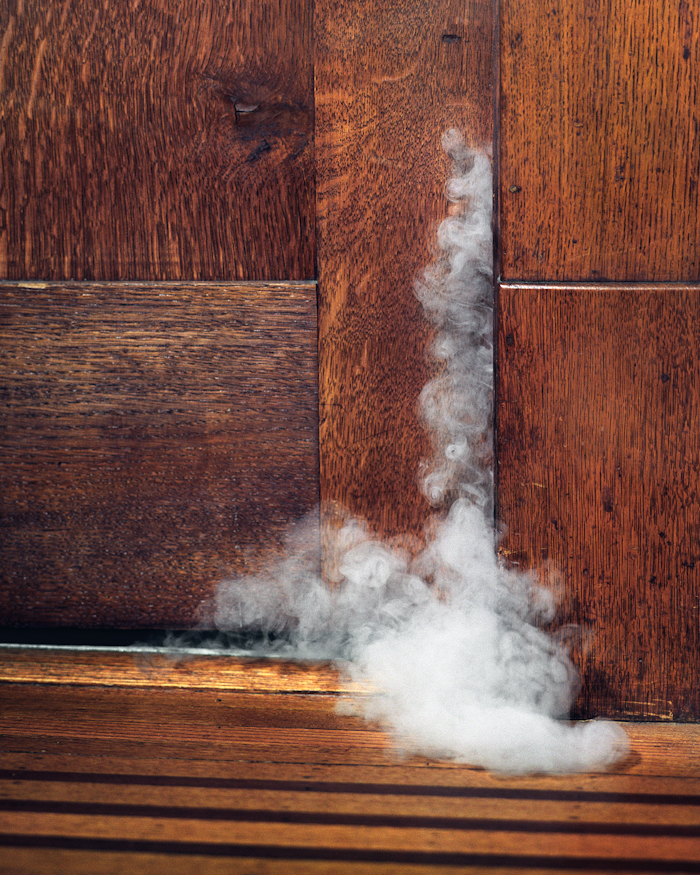
The reconstruction of these vernacular images invites us to look beyond the surface of the image and to further question the human experience. The visual layers in the photographs seem to be a metaphor for the complexity of our existence. How did you choose which images spoke to you and could you tell us a bit about your process?
It has always been part of my practice to work with objects in order to create still lifes, which I see as extensions of the portrait work. For the Mimesis project I’m combining the two subjects, portraiture and still life, in order to create a new image, a new kind of portrait if you want to call like that.
I searched for the images on Ebay, flea markets and thrift stores. I looked for images that were quite straightforward and formal, i.e. studio portraits, high school portraits etc. Candid shots or family shots didn’t work for me as I wanted to have images where the person photographed had to engage with the camera and there were no other distractions; the moment where it is all about the person and not so much about capturing a situation or event, so that the image becomes a representation of that person.
Finding the right images was a bit like a casting process, something that I often did for my portrait projects. Casting is a pretty intuitive process, somebody walks by and you see something intriguing, something that could work – something inspiring. For Mimesis, it was the facial expression, the smile, the symmetry of the face. I think I looked for a certain innocence and openness in their face. And then there were formal aspects; I noticed that older images worked better for me than newer, with some colours / palettes being more intriguing. But like the casting process, you never know until you actually work with the person. I acquired many images that didn’t turn out the way I thought they would or I didn’t find a way to ‘access’ them. They are waiting in the drawer for their second chance.
When I found something suitable, I usually spent quite a bit of time with the image, looking at it and familiarizing myself with it. In a way I tried to get to know the person that is shown in it, and figure out the essence and uniqueness of that particular image. The way the actual image is created then is a very analog, hands on process. I don’t use any Photoshop, everything is assembled manually and in this way the process is almost sculptural. I basically create an installation of a found photograph combined with other materials like fabric, glass, ink etc. and then take a picture of it. That’s what these images are, three-dimensional installations turned into one-dimensional photographs.
With some of them, I actually asked myself why I am even taking a photo of it, as they looked really intriguing on their own, as an object and wouldn’t have needed the transformation back into an image.
You have two new projects and an upcoming book. What are your future plans for this new work?
Over the past two years the two projects have nurtured each other but also stolen spotlight and attention from each other. When I felt I had come to a bit of a dead end with Lying Still, I started working on Mimesis and released it once I felt it was in a good place to be shared with the world. But then I got so busy focusing again on Lying Still, as in the meantime I had developed some ideas how to finish the project, so promoting Mimesis fell a bit through the cracks.
Now I am at the point where I’m just about to wrap up Lying Still and I want to focus on promoting both bodies of work. I will have a solo show with Lying Still in Vancouver in April and the goal is to have a self-published dummy version of the book ready for the show as well. It will be interesting to see how the book translates on to the wall. After the show, I will have to look into ways to publish Lying Still, either by finding a publisher or by figuring out how to self publish it. And of course it would be great to maybe show even both bodies of work together at some point – I will have to look into venues and apply for shows…
